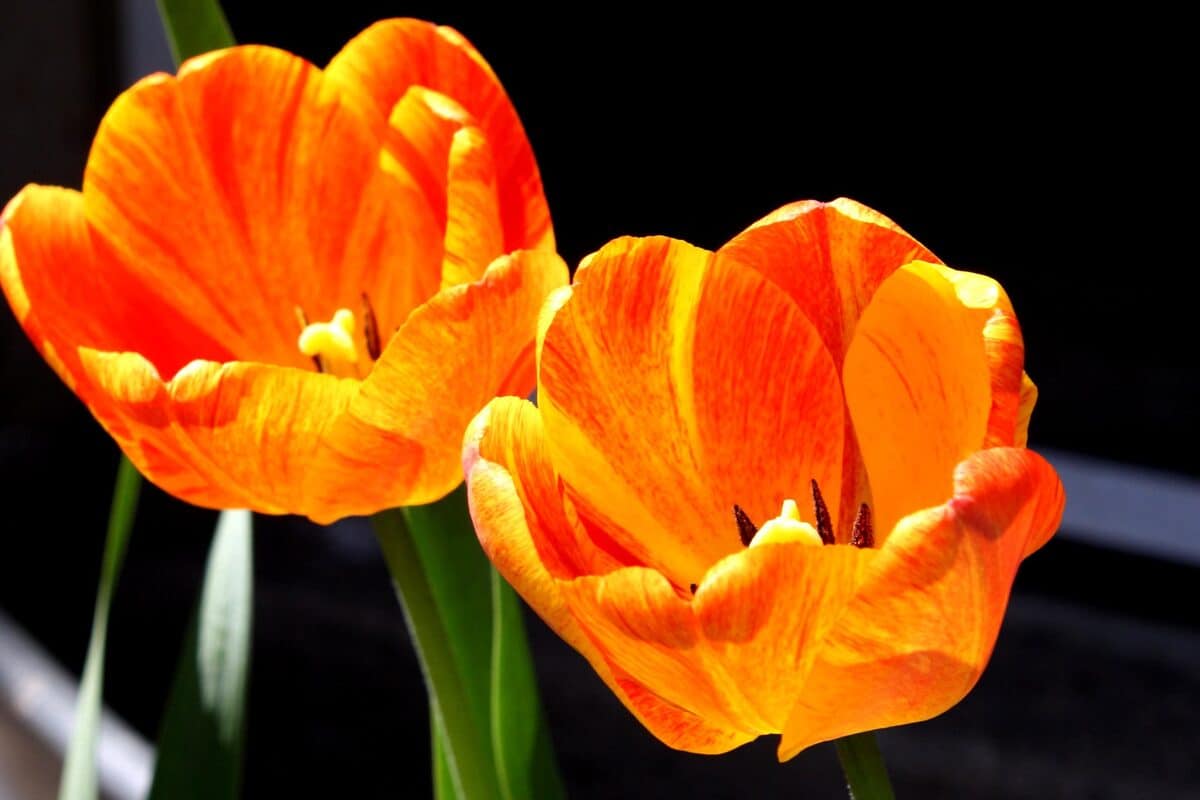
Tulips, who has not heard of them? It is even possible that you have cultivated them once, or that you are a collector. These flowers have captivated humans for thousands of years.
They are small plants, but with a beauty that is difficult to describe. The shape and color of its petals vary according to the species and especially according to the cultivar, the latter artificially created by man.
Origin and characteristics of tulips
The tulip is a bulbous plant that, despite popular belief, is not native to the Netherlands, but to Asia. To be more exact, it grows in the Middle East, Afghanistan, Iran and China. A few species are European, where they live in the south of the Old Continent. The botanical genus to which it belongs is Tulipa, which was described by the botanist Carlos Linneo.
It is estimated that there are more than 100 different species, but many more hybrids and cultivars. So many that it is difficult to know exactly. But all of them have in common a series of characteristics, which are:
- Bulbs: they are about 3 centimeters high, the base being the widest. It grows underground, and has relatively short roots. Leaves and flowers sprout from it in spring, which dry up after flowering.
- Leaves: they are more or less bluish green in color, and are elongated with a pointed end. They measure about 10 centimeters in length by 2-3 centimeters in width.
- Flowers: they are hermaphrodites, and usually appear in groups of up to 3. They have a flared shape, and can be of very varied colors: orange, red, lilac, white, pink.
- Fruits: they are dry capsules that open into shells. These contain small, flat and brown seeds.
How long does the tulip flower last?
If it is a cut flower, it can last about 10 days in a vase if you change the water every day. But if you leave it in the plant, it will remain for about 2 months. In any case, if you see that its petals start to get ugly and fall off, you can remove them.
What to do when a tulip finishes blooming?
Once the flowering has come to an end, You can do two things: either cut the stem and leave the bulb buried in the pot or in the ground; or take it out and put it away in a dry, dark place until winter returns, which is when it will be replanted.
How many times a year do tulips bloom?
Just one, in spring. What happens is that tulips can produce several flowers in a single season. But since the aerial part (leaves, flowers) have a life expectancy of only a few months, we should not expect it to bloom two or more times a year because that will not happen.
Tulipa species
Although today cultivars are the ones that are sold the most, it is interesting to know at least some of the Tulipa species, such as these:
Tulipa agenensis
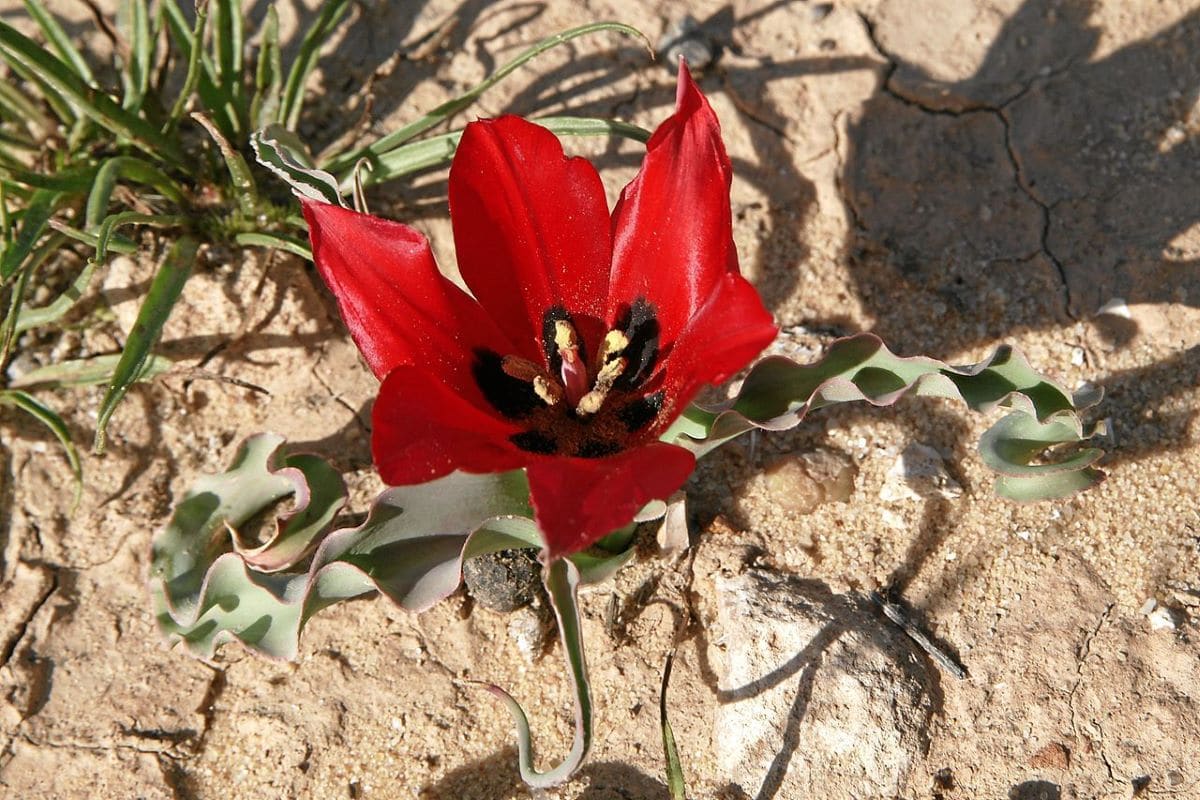
Image - Wikimedia / Mboesch
It is a type of tulip typical of Syria and Israel. It produces flowers of a striking dark red color with the center with black spots that have a yellow border, and are 4-5 centimeters wide.
clusian tulip

Image - Wikimedia / Burkhard Mücke
It is a native species from Iran to the Himalayas. The flowers are white with a yellow center, and it is very interesting because it does not need a cold winter to be able to bloom in spring. In fact, thanks to this quality, it is grown without problems in southern Europe.
tulipa fosteriana
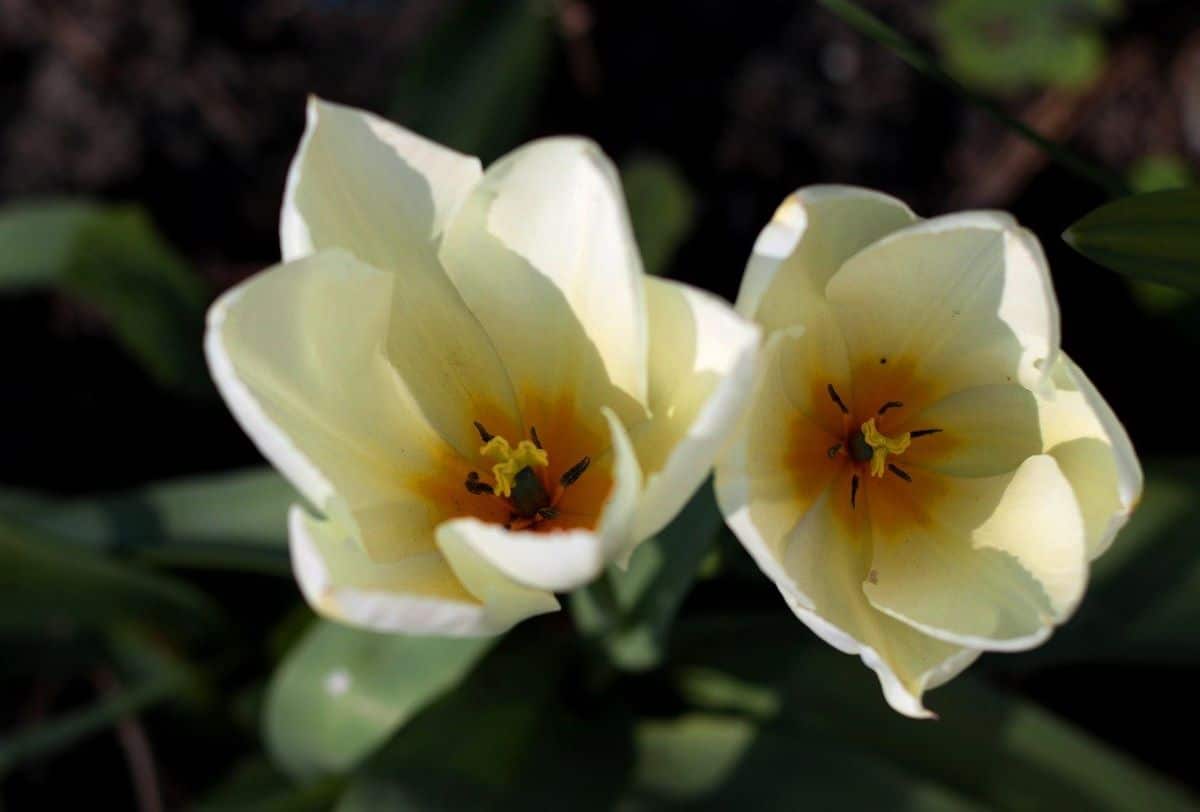
It is an Asian variety that has orange flowers with a reddish center. These are narrow, and have an upright bearing. As a curiosity, many popular hybrids come from this species, and are known as tulipa fosteriana hybrid
tulipa linifolia
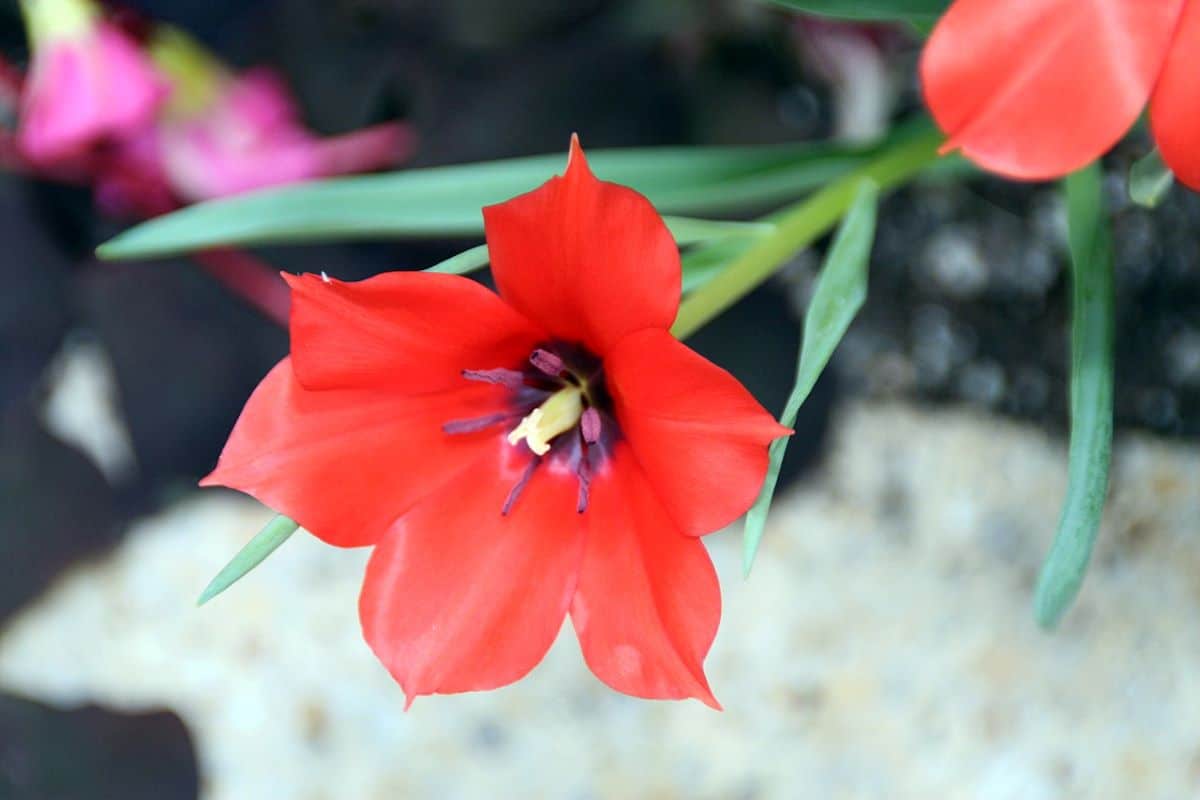
Image - Wikimedia / Burkhard Mücke
It is a species of tulip native to Iran, Afghanistan and Uzbekistan, which has really pretty flowers. These are orange, red, or soft yellow and they measure approximately 4 centimeters in diameter.
tulipa pulchella
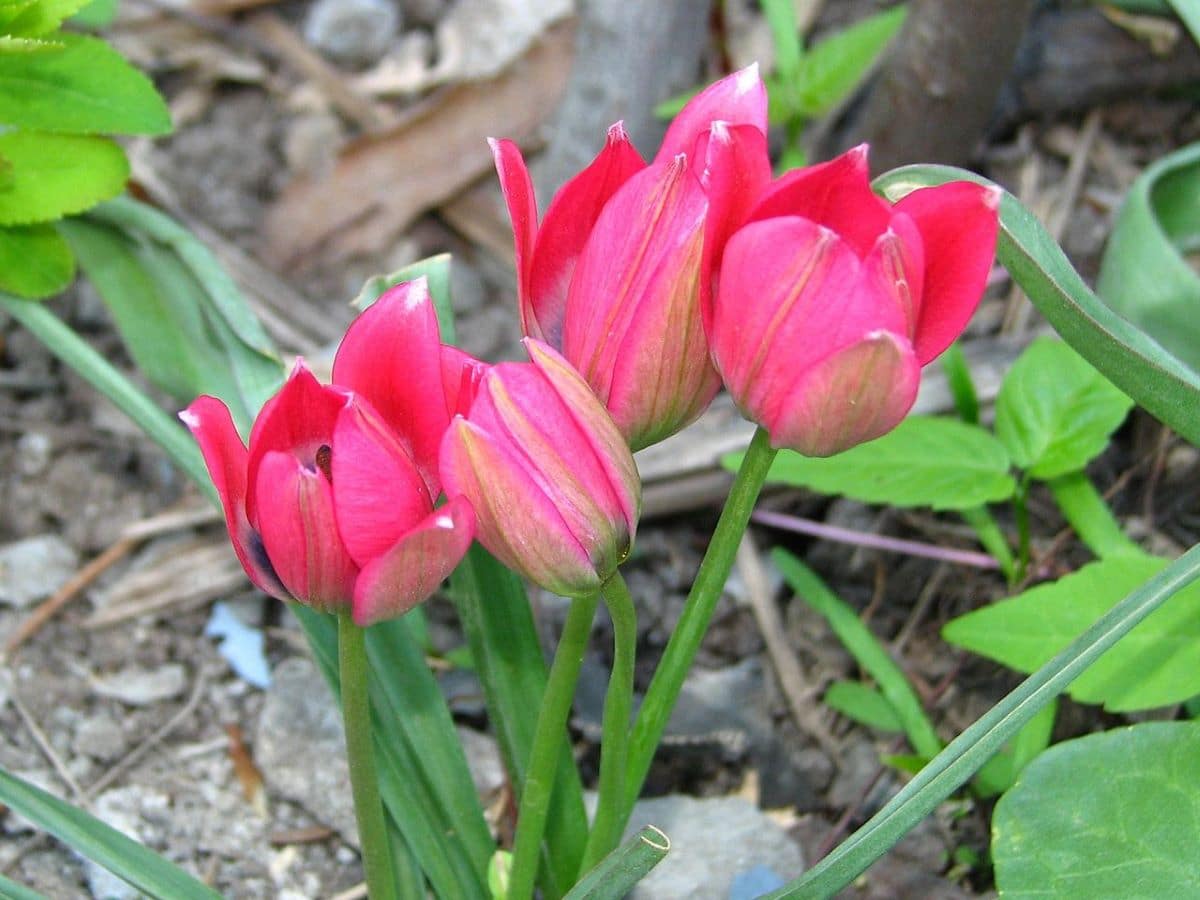
Image - Wikimedia / Kor! An (Андрей Корзун)
It is a type of small tulip that grows in Asia, specifically in Turkey and Iran. The flowers are a showy purple color, and are about 3 centimeters tall.
How are tulips cared for?
Tulip plants can be grown in pots or in the ground. They don't need much to survive, so they're definitely great for beginners. But if you have bought a bulb, or an already grown plant, and you have doubts about its care, pay attention to what we will tell you below:
Location
So that the flower grows straight and well, it is important that it be placed in a sunny area. The sun's rays have to hit it directly; in fact, if it were not the case, the stem would lean looking for the most powerful light source at least. And is that when you do not receive the amount of light you need, you can have many problems, such as these:
- It does not produce flowers, and if it does they open completely to try to capture some light.
- The leaves weaken, lose firmness, and eventually "hang down."
So do not hesitate to find a place where the plant is exposed to the star king. This way, you can be really fine.
Earth
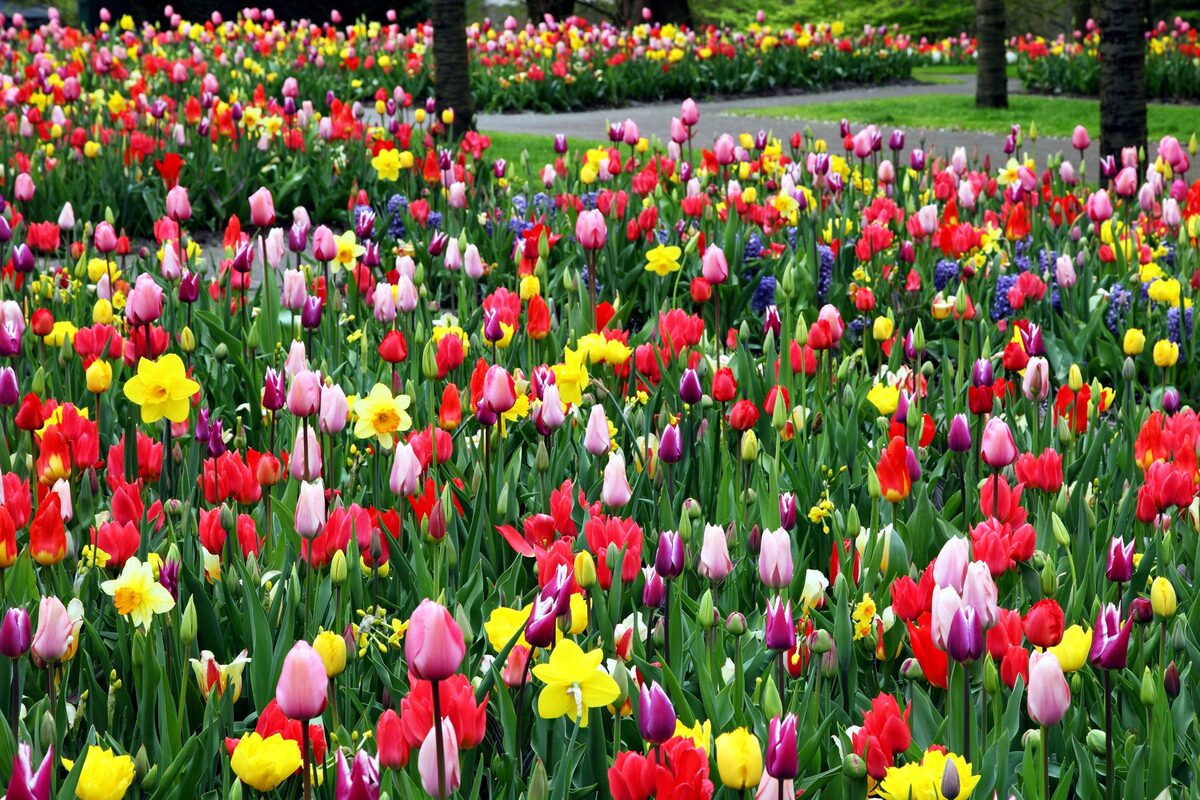
The earth It has to facilitate the development of the plant, and avoid rotting of the bulb as much as possible. Therefore, we must plant it in sandy, light soils, so that it can be well.
Even if we are going to grow it in a pot, it is necessary that the substrate contains perlite, such as No products found., arlita, or some similar substrate so that neither the roots nor the bulb remain wet too long.
Irrigation
Watering the tulips it has to be occasional. We are talking about plants that do not tolerate excess water, and therefore will not bear having the soil wet every day. Therefore, in addition to planting them in a suitable land (see previous point to know more), you must water once or twice a week.
Likewise, and in order to avoid waterlogging, if it is in a pot, in case we put a plate under it we have to remove the water that is left over as soon as we finish watering. Only in this way will they be able to grow and flourish without problems.
How should tulips be watered?
Every time it touches water, we will do it directing the water to the land. Do not wet the leaves or flowers. But it is also important that the earth is moistened well, so if it is in a pot we will water until it comes out through the drainage holes, and if it is in the ground we will add more or less half a liter per bulb.
Subscriber
You want me to get a lot of flowers, right? Then We recommend that you fertilize it from the moment you see that the leaves are sprouting, until the petals wither; that is, during the spring.
To do this, you can use fertilizers that stimulate flowering, or opt for fertilizers -which are ecological-, such as guano (for sale here) for example, or chicken manure as dry as possible because if it is fresh it will burn the roots.
Multiplication
The tulip multiplies by separating bulbs that sprout from the main bulb (or "mother bulb", if you like). To get these bulbs, you have to keep the main one in the pot or on the ground always. After flowering, the flower stalk is cut, and soon after, if all goes well, the small bulbs will start to sprout.
To separate them you have to wait until they are at least one or two centimeters long, but it is better if they are larger. Therefore, you have to wait between six months and a year. Once that time has passed, the bulb will be unearthed to remove the small ones. The latter should be treated with fungicides such as copper powder, as this prevents fungi from rotting them. Later, they will proceed to plant them in the garden or in pots.
When to plant tulips?

Tulip bulbs they have to be planted in winter, or at the latest in early spring, as they will flower only a few weeks later. So don't hesitate to get your bulbs in the fall or winter.
How to plant tulip bulbs?
Whether it is to be done in a pot or in the garden, it is important that they are buried at a depth which must be twice the height of the bulb. Let me explain: if the bulb is 2 centimeters high, it has to be buried about 4 centimeters, or 5 at the most. And there must also be a separation of about ten centimeters between bulbs. What's more, the narrowest part has to point up, since from it the leaves will sprout first, and later the flowers.
How to preserve tulip bulbs?
The bulbs can be kept where they are, in a pot or in the ground. But also it is possible to remove and store them after cleaning with a brush in a cardboard box. We will have this in a dry and dark place, such as in a drawer.
Rusticity
Tulip bulbs are resistant to frost. They can withstand up to -10ºC minimum, and up to 40ºC maximum.
What does it mean to get a tulip as a gift?
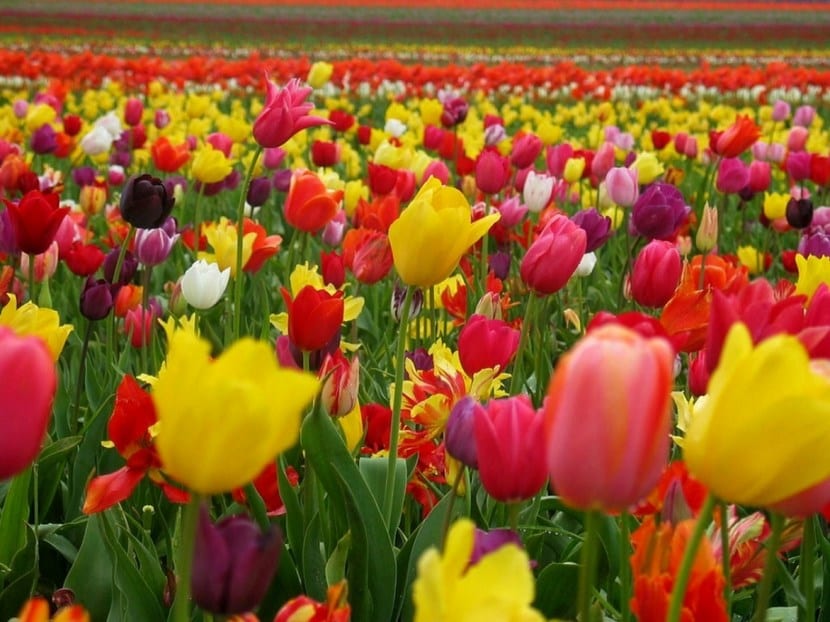
Depending on the color, it can mean one thing or another. For example:
- Yellow tulips: As this is the color of the sun, the yellow tulip flowers symbolize life, joy and friendship.
- Blue tulipsThese bluish flowers represent sincerity and trust, so they are a nice gift for someone you love.
- White tulips: they are the symbol of peace, purity and harmony, as well as goodness.
- Purple or lilac tulips: they are associated with the nobility. But that does not mean that they are not ideal for growing at home; in fact, you can have them if you consider that you have an exceptional garden or balcony. Or because you just like it.
- Black tulips: the black-flowered tulip is the symbol of mystery. It is, therefore, a perfect flower to give to someone you want to surprise.
- red tulips: symbolize love and passion. Red is a color that is associated with relationships, so it doesn't hurt to give one to your partner.
- Pink tulips: the pink tulip flowers are also associated with love, but it is that type of love that one has for the family, such as the one that parents can feel for their children for example.
Where to buy tulips?
If you want to buy bulbs, you can do it from here:
